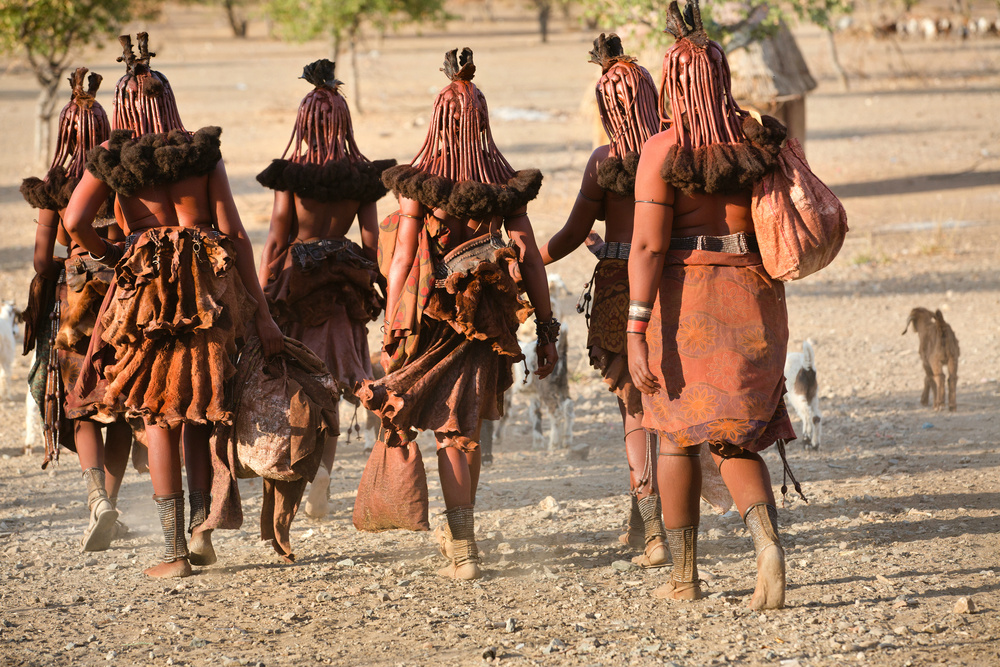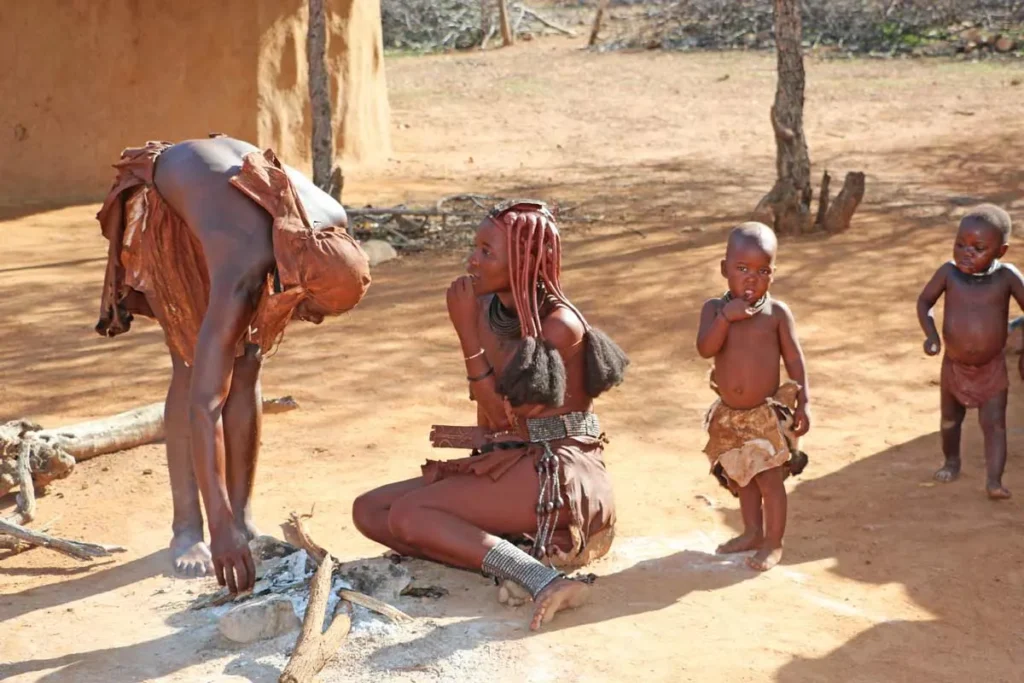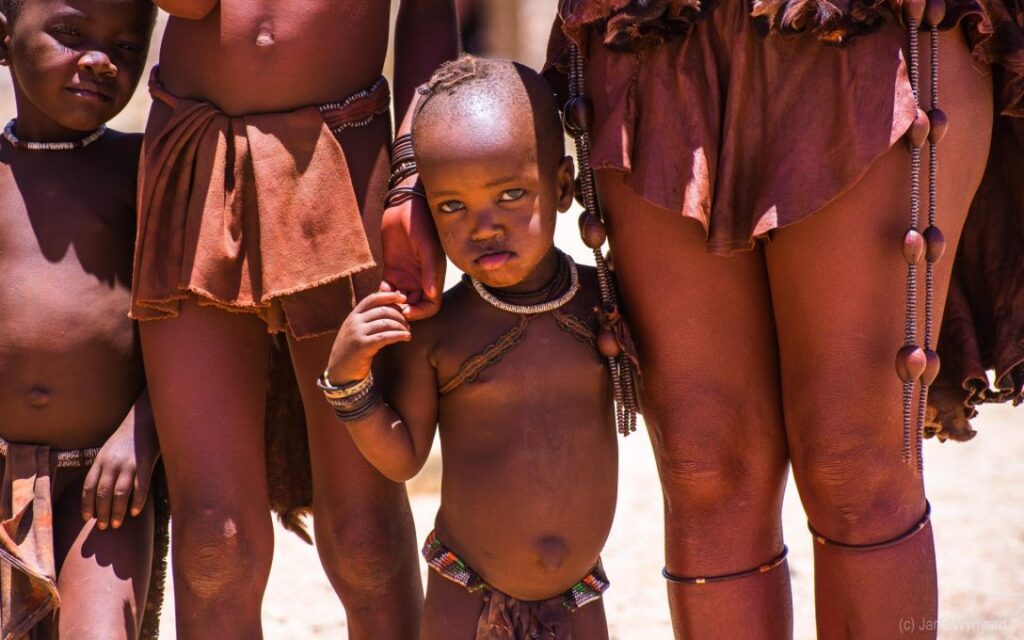In the vast, arid expanse of northern Namibia, where the red sands stretch endlessly beneath an expansive blue sky, live the Himba people—one of Africa’s most visually striking and culturally rich indigenous groups. Known for their distinctive ochre-red skin and intricate hairstyles, the Himba have preserved a traditional lifestyle that has changed little over centuries, despite the tides of modernization swirling around them.
Meeting the Himba is more than a cultural encounter; it’s an invitation to step into a world where ancient customs, resilience, and community intertwine with the harsh beauty of the Namib Desert.
The Himba Way of Life
The Himba are semi-nomadic pastoralists, relying primarily on cattle herding and goat farming for sustenance. Cattle are central to their culture—not just as a food source but as symbols of wealth, social status, and spiritual connection.
One of the most striking features of the Himba is their skin, coated with a mixture of butterfat and red ochre pigment called otjize. This not only protects them from the intense desert sun and insect bites but also serves as a beauty ritual and cultural identity marker. Women spend hours each day maintaining their skin and elaborate hairstyles, which signify age, social status, and marital status.
Social Structure and Traditions

Himba society is deeply communal and organized around family units and clans. Elders hold significant authority, guiding decisions, rituals, and conflict resolution. Traditional roles are respected, with men typically herding cattle and women managing the household and crafting.
Rituals and ceremonies mark important life stages—birth, puberty, marriage, and death—each woven with symbolism and spiritual meaning. The Himba’s animist beliefs center on ancestral worship and maintaining harmony between the living, the dead, and the natural world.
Meeting the Himba: What to Expect

Visitors to Himba communities often arrive via guided tours from regional hubs like Opuwo or Outjo. These encounters are delicate and require respectful conduct to honor the Himba’s privacy and traditions.
The Himba are generally welcoming but cautious of tourists. It’s important to ask permission before taking photographs and to approach interactions with humility and genuine curiosity rather than voyeurism.
Guests may be invited to observe daily activities such as milking goats, crafting jewelry, or preparing traditional meals. These moments offer rich insight into the Himba’s relationship with their environment and each other.
Challenges and Changes
While the Himba strive to maintain their traditions, they face challenges from climate change, land rights issues, and increasing contact with the outside world. Droughts have intensified, threatening water sources and livestock health. Government policies and tourism bring both opportunities and pressures.
Some younger Himba are migrating to towns for education and employment, sparking debates within communities about cultural preservation versus modernization.
Responsible Tourism with the Himba

Ethical engagement is essential when visiting Himba villages. Support local economies by purchasing crafts directly from artisans, and choose tour operators who prioritize community consent and benefit.
Respect cultural boundaries and understand that the Himba’s way of life is not a tourist attraction but a living heritage. Building genuine connections often leads to the most meaningful experiences.
Final Thoughts
Meeting the Himba people of Namibia is an unforgettable journey into resilience, tradition, and humanity’s deep connection to place. Their vibrant culture and spirit thrive in one of the world’s most challenging environments, offering powerful lessons on adaptation, identity, and respect.
For travelers seeking encounters that transcend the ordinary, the Himba invite you to witness a timeless way of life beneath Namibia’s endless skies.
